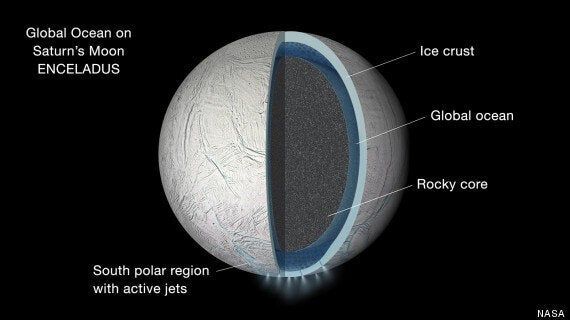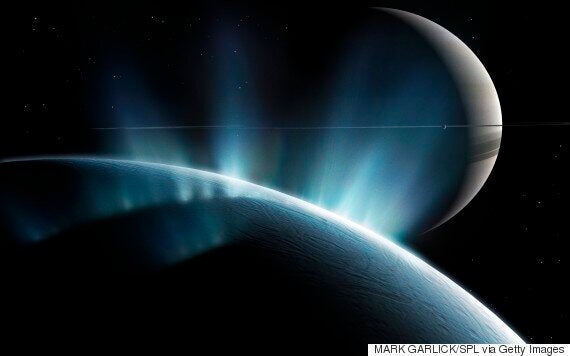NASA has confirmed that Saturn's moon Enceladus has a massive ocean covering its entire surface.
The astonishing discovering was made using vast quantities of data collected by the Cassini spacecraft which has been orbiting Saturn and its surrounding moons for the last 10 years.

More recently Cassini confirmed the existence of hydrothermal vents on Enceladus' surface which in turn confirmed that there was clearly a large body of water located within the moon.
Using the data collected by the spacecraft scientists looked at seven years worth of photographs, carefully logging its position using craters as markers.
What they found was that Enceladus' orbit was unlike anything they'd seen before. Not only was it changing speed as it moved around the gas giant, but it also had a slight wobble.
They then took this wobble and applied it to various structural theories and found that only one composition could allow for such a degree of movement.
SEE ALSO:
Matthew Tiscareno, a Cassini participating scientist at the SETI Institute, Mountain View, California, and a co-author of the paper said,
"If the surface and core were rigidly connected, the core would provide so much dead weight the wobble would be far smaller than we observe it to be, this proves that there must be a global layer of liquid separating the surface from the core."

This remarkable composition means that the moon's rocky centre almost 'floats' inside the ice-shell that surrounds it with Saturn's gravitational pull causing the core to move independent of its surface, thus creating the wobble.
Cassini's mission has been something of a landmark for NASA. Not only has the humble probe captured some of the most stunning pictures we have of our Solar System but it has proven to be a game-changing scientific tool in helping to better understand how Saturn and it's moons interact with each other.